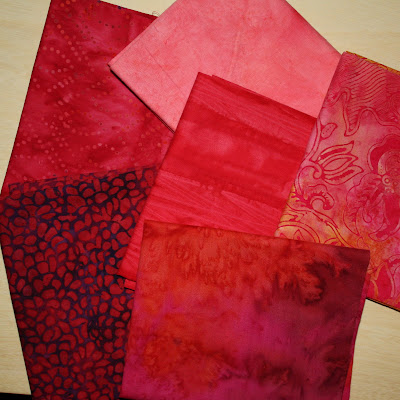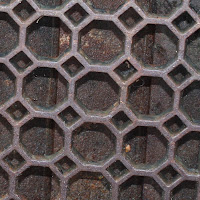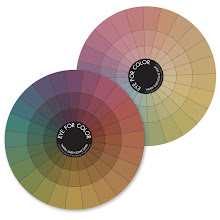I promised to discuss value and texture and what better way to do so than by taking 'color' out of the equation. A plain sheet of white paper is rather boring. But it isn't that the 'white' is boring, it is the fact that a uniform color is stagnant, there is no movement on the page.

In the images above, our eyes are first drawn to the areas on each photo that present the greatest difference in value (lightness or darkness) such as the spot on the painted gear that has rusted through the paint, or the dark bark in the crotch of the birch tree on the far left. Our senses are further stimulated by moving from one area of high contrast to the next. Once we have absorbed the darkest darks and brightest highlights our eyes can then take in all of the other details. It is this mixture of light and dark values that provides us with visual texture.
If seen on it's own, the birch bark or the painted gear would be classed as 'white'. However when compared with the 'grey scale' underneath, you can see many different shades from white through grey and even black.
Color is introduced into these pictures, but the concept is the same. It is the value differences, the dark shadows and brighter highlights that give each photo interest. Notice too, that in my Copper Penny bead soup, I have included different shapes and sizes of beads as well as matte finishes and shiny surfaces - all of these components contribute to the texture and movement in the soup. But more on that another day.
Here is the first step in a series of easy, fast and fun exercises that I give to all of my students - from 1st through 6th graders in basic art classes up through adults in my beading and color classes - to help them understand value and at the same time stimulate their right brain. If you decide to do this series of exercises, I promise it will get more exciting later! Let me know if you are game...
Materials:
- a couple of old magazines that you can tear up
- glue stick
- sheet of paper (cardstock preferably)
- timer
- set the timer for 10 minutes (yep, only 10!)
- choose a single color at random
- tear out pieces of that color from the magazine and randomly glue onto your cardstock
- make sure you use all values of the color and it is okay to be generous with the definition of the color family (eg. 'green' could include blue-green and yellow-green)
- glue into a 'blob' so that there is no cardstock showing through the middle of your 'blob'
- make sure you stop at 10 minutes to prevent your left brain from taking over
I know this first exercise seems juvenile, but bear with me - we will build on it!
You may want to try the same idea in a different medium. Take out your camera and search for just one color (even if you have to eventually crop the photo to isolate it). Or throw fabric scraps from the same color family into a pile. Whatever medium you choose make sure to include all values of the color - light and dark to mimic highlights and shadows.

...we will expand on this next time



























Very cool! It's the wee hours right now but I can't wait to do this tomorrow. Just reading this and looking at the red paper cut-outs is already helping me to see the difference in the values and how texture reflects or absorbs light. A "light bulb" moment for this novice! Can't wait to see what you have in store for us.
ReplyDeleteHi, wauw what a neat thing to do. I'm gonna try it with some great pictures I have just laying around doing notting. If it turns out good I'll might put it up in a frame. I still have some bare walls left in the house. And I'll send you a picture (only if it works out well, hihi).
ReplyDeleteGood explanation and exercise. The color collages I did only took about 10 minutes. Thanks for visiting my blog.
ReplyDeleteBeverly thank you for following my blog. It means more than you realise. I just want to let you know that I am on a break at the moment as my husband and I relocate to Ireland from South Africa. I will be back soon and when I do get back I will spend some quality time in your space. Colour and texture inspires me and your blog is full of it!
ReplyDeleteBlessings,
Claire
This is most inspirational and I am keen to know more! Tomorrow I will allow my right brain to do the first test in the allotted time. Hope it does not include the finding of all the materials!
ReplyDeleteAnne
I'm definitely going to do this as well!
ReplyDeleteShay
You're right...my left brain and computer-assisted habits are getting in the way. It's like that character in 'All of Me' where Steve Martin is simultaneously inhabited by two people going different directions!!!
ReplyDeleteI think that some really good music (blasting a little even) will help get me out of my left brain...no, right...no, left... geez... theoretically this is a very good exercise. ;)
Joie
Okay Beverly, this was harder than I thought! Joie is right, I should have had some loud music on to take me "out of my head" a little bit. I was thinking waaay too hard. "Is this red? No, it's violet. No, this one is orange, Yep, this is red, no this one is pink..." And on, and on but then, even when quiet, I am not a quiet soul. Am going to the country for a week with a dear friend and her 12 year old and am taking the mags & scissors. I want to see a child do this!
ReplyDeleteLisa,
ReplyDeleteIt is rather hard at first - even though it sounds so easy!
Some guidelines for this project while you are in the country:
1. No scissors!! just tear the paper - fast and not perfect.
2, Pink, violet, orange-red are perfectly okay! Expanding the 'red' color family to either side is great and will help you in the next exercise.
3. Don't think or ask yourself if something is right or wrong. Just tear and paste with absolutely no critiquing.
Have fun, grab a glass of wine and play some music. Try loud and wild or soft classical - whatever makes you happy and carefree!
Great post! Really informative, great pictures, great project! Looking forward to seeing where it goes next...
ReplyDeleteThis sounds like an interesting exercise, I might try it.
ReplyDelete